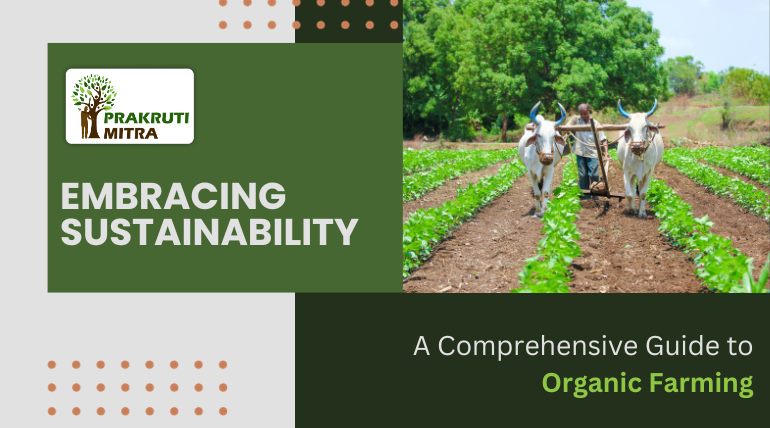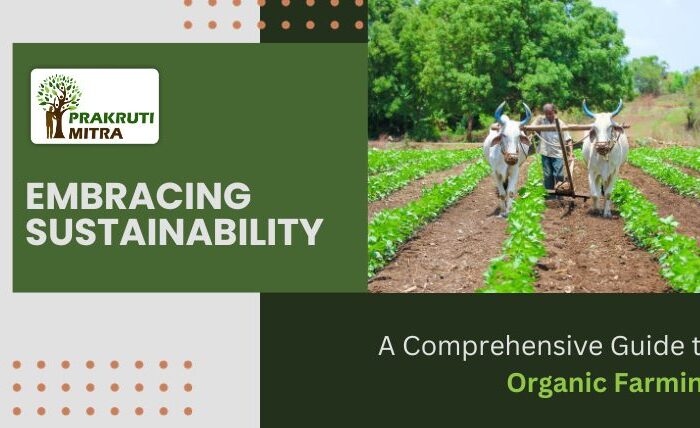In an era of growing environmental awareness and health-conscious consumers, organic farming has gained significant attention and momentum. Organic farming represents a sustainable and eco-friendly approach to agriculture, eschewing synthetic chemicals and emphasizing natural processes. In this article, we’ll delve into the world of organic farming, exploring its principles, methods, benefits, and challenges.

Understanding Organic Farming
Principles of Organic Farming:
Organic farming is founded on a set of principles that guide its practices:
- Avoiding synthetic pesticides and fertilizers.
- Promoting soil health and biodiversity.
- Using organic seeds and non-GMO varieties.
- Prioritizing animal welfare in livestock farming.
- Prohibiting the use of growth hormones and antibiotics.
Soil Management:
Organic farming places a strong emphasis on soil health and fertility. Practices like crop rotation, cover cropping, and composting are common. These methods enhance soil structure, moisture retention, and nutrient availability.
Pest and Disease Management:
Organic farmers use integrated pest management (IPM) techniques, which rely on beneficial insects, companion planting, and careful monitoring to control pests and diseases without synthetic chemicals.
The Benefits of Organic Farming
Healthier Food:
Organic produce is grown without synthetic pesticides and fertilizers, making it safer for consumption. Studies suggest that organic food may contain higher levels of certain nutrients and antioxidants.
Environmental Sustainability:
Organic farming is kind to the environment, as it reduces chemical runoff, soil erosion, and damage to wildlife. It also supports healthy ecosystems and biodiversity.
Reduced Carbon Footprint:
Organic farming often involves more sustainable practices, like reduced tillage, which can help sequester carbon in the soil, mitigating climate change.
Support for Small Farmers:
Organic farming provides opportunities for small-scale and local farmers, helping them compete in the market while maintaining ecological practices.
Challenges and Considerations
Lower Yields:
Organic farming can lead to lower crop yields compared to conventional farming due to reduced chemical inputs and pest control challenges. However, this is often offset by the premium prices that organic produce can command.
Transition Period:
Transitioning from conventional to organic farming can be a long and challenging process. It typically takes several years to gain organic certification.
Market Demand:
The demand for organic products is rising, but it can still be limited in some regions. Farmers must carefully assess the local market before transitioning.
Certification Costs:
Organic certification involves costs for inspection and compliance, which can be burdensome for small farmers.
The Global Reach of Organic Farming
International Standards:
Organic farming has established international standards and certifications, allowing organic produce to be traded globally. Organizations like the USDA Organic in the United States and the EU Organic logo in Europe ensure the integrity of organic products.
Organic Labels:
Consumers can identify organic products by labels like “USDA Organic,” “EU Organic,” or “Certified Organic.” These labels indicate compliance with specific organic standards.
Emerging Organic Markets:
Developing countries are increasingly participating in the global organic market, offering unique products and expanding the industry’s reach.
Conclusion
Organic farming represents a significant shift in agriculture, focusing on sustainability, health, and environmental protection. While it comes with its challenges, the benefits of organic farming, including healthier food, reduced environmental impact, and support for local farmers, make it a vital component of the global food system.



1 Comment
Pydi poojitha
Good